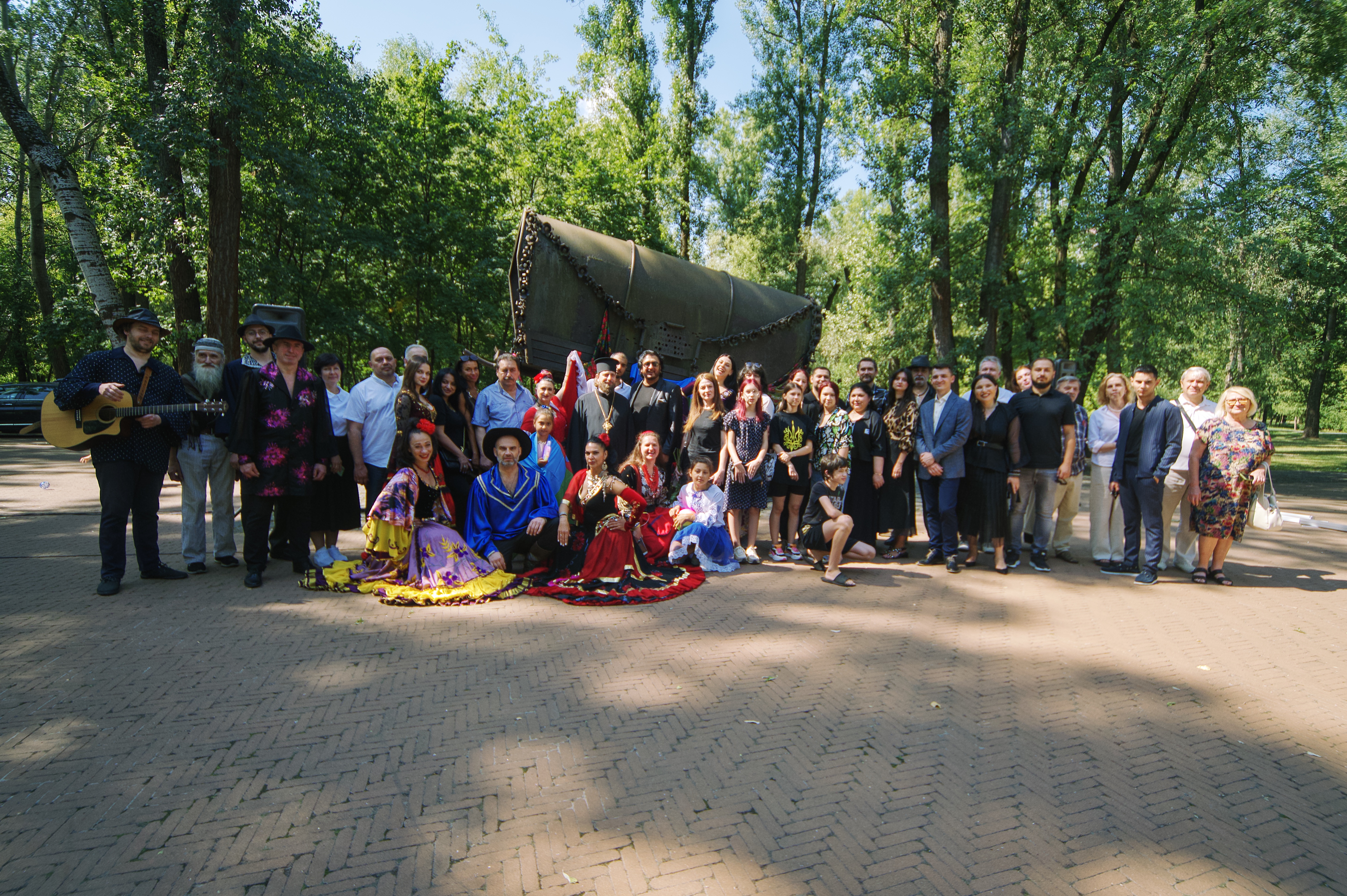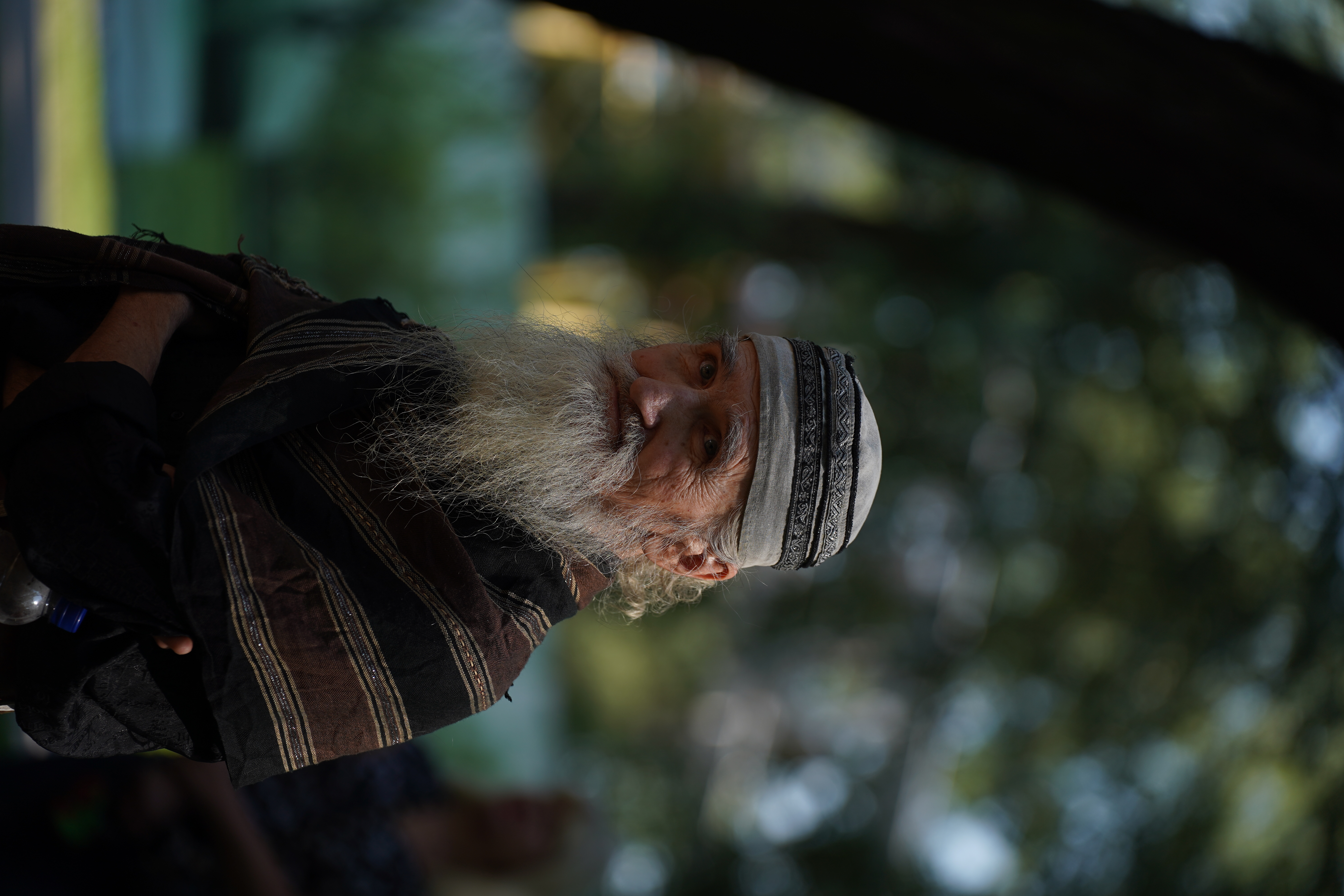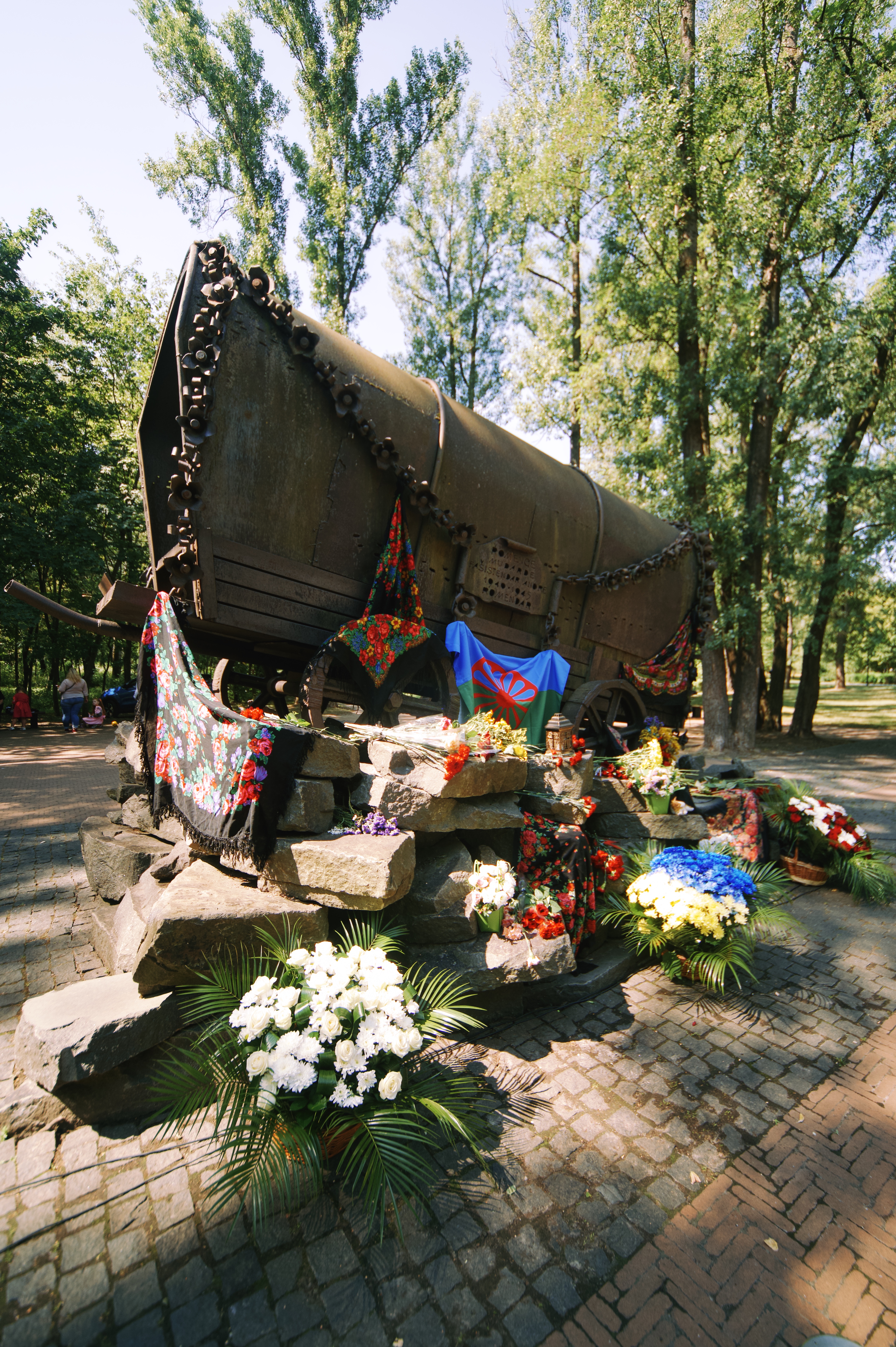The Most Forgotten Genocide: What do we know about the extermination of Romanis by the Nazis
This year, the international community commemorates the 80th anniversary of the tragic date: the Nazi extermination of Romanis during the Second World War. Roza Tapanova, Director of the Babyn Yar National Memorial, Artur Zolotarenko, Chief of Department of the Babyn Yar National Memorial, and Valerii Sukhomlyniv, Co-Chair of the Ukrainian Romani Association speak in the memory of the past, the history of the Romani Cart in Kyiv, and the place of the Romani community in modern-day Ukraine.
On the 2nd/3rd of August, 1944, approximately 3,000 Romanis were exterminated in gas camps of Auschwitz-Birkenau death camp. Overall, the Nazis have killed over 20 thousand Romanis from 14 European countries in this camp.
The so-called «Gypsy issue» alongside the «Jewish issue» came on the agenda within the framework of the harsh policy of «racial hygiene» which was the bedrock of Nazi German ideology. This policy stipulated for artificial selection, suppression, and/or extermination of people due to their ostensible racial inferiority.

Photo: Participants of the commemorative ceremony in Babyn Yar
As Artur Zolotarenko, Chief of Department of the Babyn Yar National Memorial, explains, the theory was that the origin of Romanis was India—that is, that they hailed from the same region from where Aryans come—who were regarded as the «superior» race. This was in contravention with the ideology of the Nazi Germany. Therefore, an opinion was disseminated that those Romanis who headed towards Europe, were initially «racially pure» but then they «polluted their blood» over centuries through mixed marriages.
The exact number of Romanis who perished during the Holocaust cannot be determined. It is considered that, over the years of the Second World War, Nazis deported over 500,00 people from the occupied countries and burnt them in death camps. Within the modern-day Ukraine, an approximate number of 24,000 Romanis have been killed.
As Roza Tapanova, Director of the Babyn Yar National Memorial, has noted, any tragedy is measured in numbers. That said, it is most important to remember the names and the stories of each separate person, too.
«In a country which cares about the life of its each and every citizen, a tragedy must be measured by stories coming from each individual. This is what our assignment consists in. This is what makes us different. Our policy for our children and our grandchildren must be one aimed at putting together a healthy nation which will 100% never depart from the democratic values we now discuss», — stresses Roza Tapanova.

Photo: Roza Tapanova
Mass murder of Romanis during the Second World War are referred to as «the most forgotten genocide». For a long time now, this crime against humanity was all but ignored in the media space. One of the main reasons was the fact that there are way fewer Romanis than there are, say, Jews. Besides, the social position which the Romanis used to hold for a long time was quite low.
As Valerii Sukhomlyniv, Co-Chair of the Ukrainian Romani Association, adds, the state powers of the Soviet Union had long been hushing up the facts of genocide of ethnic minorities, due to their own vested interests.
«The general practice of the time was that everyone was supposed to speak Russian and disavow one’s roots; there was only supposed to be one ‘soviet people’. Once Ukraine became independent, a separate Ukrainian nation arose and defended its right to be; next, other ethnicities followed suit. As a matter of fact, the Romani organisation was one of the first minority organisations that came into being in Ukraine», — says Valerii Sukhomlyniv.

Photo: Valerii Sukhomlyniv
The «Romani Cart» installed in the Babyn Yar National Memorial reminds visitors about the horrendous crimes of the Nazis. «In 1941, during the occupation of Kyiv by the Nazi invaders, four Gypsy encampments were gunned down. These were one of the first victims of the Babyn Yar», — explains Artur Zolotarenko. He said that once there emerged an initiative to create the monument, the financial matter came onto the agenda as to how one could fund it. The expenses were partially covered by the Soros Foundation, partially by funds raised by the Romanis themselves.
The monument was created by Anatolii Ihnashchenko, a Ukrainian architect of Romani origin and an awardee of the Shevchenko Prize. The monument was made of wrought metal at the Kuznia na Rybalskomu factory in Kyiv. It is a 1:1 depiction of a traditional Romani cart, decorated with flowers and pierced with bullets.

Photo: The Romani Cart memorial in Babyn Yar
The history and struggle for the Romani Cart was also difficult—same as the history of the Romani people has been. It was supposed to be installed back in the 1990s on the initiative of Volodymyr Zolotarenko, Chairman of the Kyiv Romani Association, but the idea came into being only in 2016. By that time, it was Artur, Volodymyr’s son, who had picked up the mantle.
«As I walk along Babyn Yar, I can see people bring flowers there quite often. I can see children running along. For some reason, children are very much attracted by this memorial. They ask their parents: what is this cart? Sometimes, they even draw hearts or flowers on it», — says Artur Zolotarenko.
«There are over 30 monuments in Babyn Yar. All of them were created with the sole purpose: to register the fact that a certain event took place and that it should never be forgotten. It is possible that some of them were not quite properly conceptualised. But when people were forbidden from discussing or keeping memory of a certain event—they wanted to register, to remember that, in spite of the ban. One of such monument is this one here, where we stand. And then, when people start deciding if it is consistent with this place or if it isn’t, they should just think through the prism of the history of Babyn Yar and, by in large, through the prism of how was it at all that this Holocaust of memory took place here. And what did citizens, people do in order to commemorate those times of murder, when Romanis, Jews, and Ukrainians were killed. And when Babyn Yar was submerged under water, to make sure everyone forgot about it. That is why this is a place of tragedy—but a place of heroism, too. When you could be punished but still wanted to register the memory, the fact that you remained human, and that it is a part of your pain», — so summarised Roza Tapanova, Director of the Babyn Yar National Memorial during the commemoration of the International Romani Genocide Remembrance Day that took place on the 2nd of August in Babyn Yar.
PHOTO: Ruslan Synhaievskyi
See also
- «Невидимі. Стійкість: минуле і сучасність ромів». Як зрозуміти історію ромів через візуальну культу
- Альфреда Марковська: історія життя і порятунку інших
- «Дивись і не забувай»: 15 років Dikh He Na Bister у Кракові
- ФОТОРЕПОРТАЖ: У Києві відкрили виставку про ромську історію та ідентичність
- «Відновлення пам'яті – роми у Варшавському гетто». Історична екскурсія у Варшаві
- PHOTO REPORT: Events commemorating the victims of the Roma genocide in Babyn Yar
- 2 серпня — Міжнародний день памʼяті жертв геноциду ромів
- Коли допомога — це більше, ніж ваучер
- Антициганізм поруч: як розпізнати упередження у звичних словах і жартах
- Стереотип замість культури: як TikTok спрощує ромську ідентичність